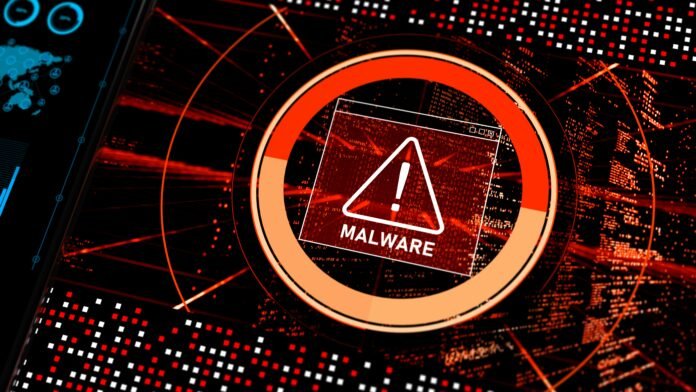The Rising Tide of Cybercrime: A Call for Preemptive Endpoint Protection
By 2025, cybercrime is projected to cost the world a staggering $10.5 trillion annually, a figure that underscores the relentless and increasingly sophisticated nature of today’s cyber threats, as reported by Cybersecurity Ventures. Despite this alarming trend, many organizations continue to rely on outdated Endpoint Detection and Response (EDR) solutions that attackers consistently outsmart. The evolution of cybersecurity is at a critical juncture, and it is clear that traditional EDR is no longer sufficient to combat the modern threat landscape.
The Evolution of Endpoint Security
The journey of endpoint security has been marked by significant advancements. The concept of EDR was introduced in 2013 by Gartner analyst Anton Chuvakin, marking a pivotal shift in how organizations detect and respond to advanced threats. EDR provided tools for real-time detection of suspicious activities and the ability to respond to breaches effectively. However, as cyberattacks have grown more sophisticated, traditional EDR solutions have struggled to keep pace.
Traditional EDR remains largely reactive, responding to attacks only after they occur. Attackers have become adept at employing creative techniques such as fileless malware, polymorphism, and encrypted payloads, which exploit the limitations of EDR’s reliance on known Indicators of Compromise (IoCs). This evolution mirrors the decline of traditional antivirus software, which became obsolete as attackers learned to evade signature-based detection. The industry responded with Next-Generation Antivirus (NGAV) and later Endpoint Protection Platforms (EPP), which combined NGAV and EDR for a more comprehensive approach. Now, we are witnessing a similar shift as traditional EDR evolves to incorporate Preemptive Endpoint Protection (PEP) solutions.
The Limitations of Traditional EDR
The shortcomings of traditional EDR are not merely theoretical; they have manifested in real-world cyberattacks that have exposed critical vulnerabilities. Here are some notable examples:
-
CrowdStrike’s Falcon Outage: A faulty configuration update to CrowdStrike’s Falcon EDR solution led to a massive IT outage, leaving organizations vulnerable. This incident underscored the risks associated with relying solely on traditional EDR solutions, which can fail catastrophically when improperly configured.
-
Akira Ransomware Exploiting Unsecured Devices: The Akira ransomware gang successfully exploited an unsecured webcam to bypass a target’s EDR defenses. By targeting a device outside the scope of traditional endpoint coverage, attackers sidestepped protections and launched encryption attacks on the network.
-
Medibank Breach: In 2024, hackers accessed millions of sensitive customer records from Medibank, despite the company’s EDR generating multiple alerts. The failure to act on these alerts highlighted a key weakness of traditional EDR: its reliance on human intervention and inability to prevent attacks before they inflict damage.
- BlackCat (ALPHV) Ransomware Attack: In 2023, BlackCat ransomware re-encrypted data at Henry Schein, a Fortune 500 company, even after initial systems restoration. The attackers successfully evaded detection, emphasizing the reactive nature of traditional EDR and its limitations in preventing follow-up intrusions.
These incidents illustrate why traditional EDR solutions, with their reactive and IoC-dependent approach, are no longer sufficient in the face of today’s advanced threats.
The Future of Endpoint Security: Preemptive Endpoint Protection
The next phase of endpoint security is here: Preemptive Endpoint Protection (PEP). Unlike its predecessor, PEP doesn’t just detect and respond to attacks; it actively prevents them. Here’s how PEP revolutionizes endpoint security:
-
From Reactive to Proactive: Traditional EDR reacts to threats as they occur, but PEP takes a proactive stance. By leveraging techniques like Preemptive Cyber Defense, which includes Automated Moving Target Defense (AMTD) and Adaptive Exposure Management (AEM), PEP focuses on preventing attacks before they can cause damage.
-
Cost-Effectiveness: Organizations that adopt proactive security strategies, such as patch management and vulnerability scanning, save 30% more on breach costs compared to those relying on reactive measures, according to research from Jumpcloud. This cost-effectiveness is crucial as organizations face increasing pressure to manage cybersecurity budgets while ensuring robust protection.
-
Enhanced Threat Intelligence: PEP solutions utilize advanced threat intelligence and machine learning algorithms to predict and mitigate potential threats. By analyzing patterns and behaviors, these systems can identify anomalies and take action before an attack occurs.
- Integration and Automation: PEP integrates seamlessly with existing security infrastructures, automating responses to potential threats. This reduces the burden on security teams and allows for quicker, more effective responses to emerging threats.
Conclusion
As cybercrime continues to escalate, organizations must recognize that traditional EDR solutions are no longer adequate to protect against the sophisticated tactics employed by today’s cybercriminals. The shift towards Preemptive Endpoint Protection represents a necessary evolution in cybersecurity strategy, moving from a reactive to a proactive approach. By embracing PEP, organizations can not only respond to threats but also actively prevent them, safeguarding their assets and ensuring a more secure digital future. The time for change is now; the stakes have never been higher.


